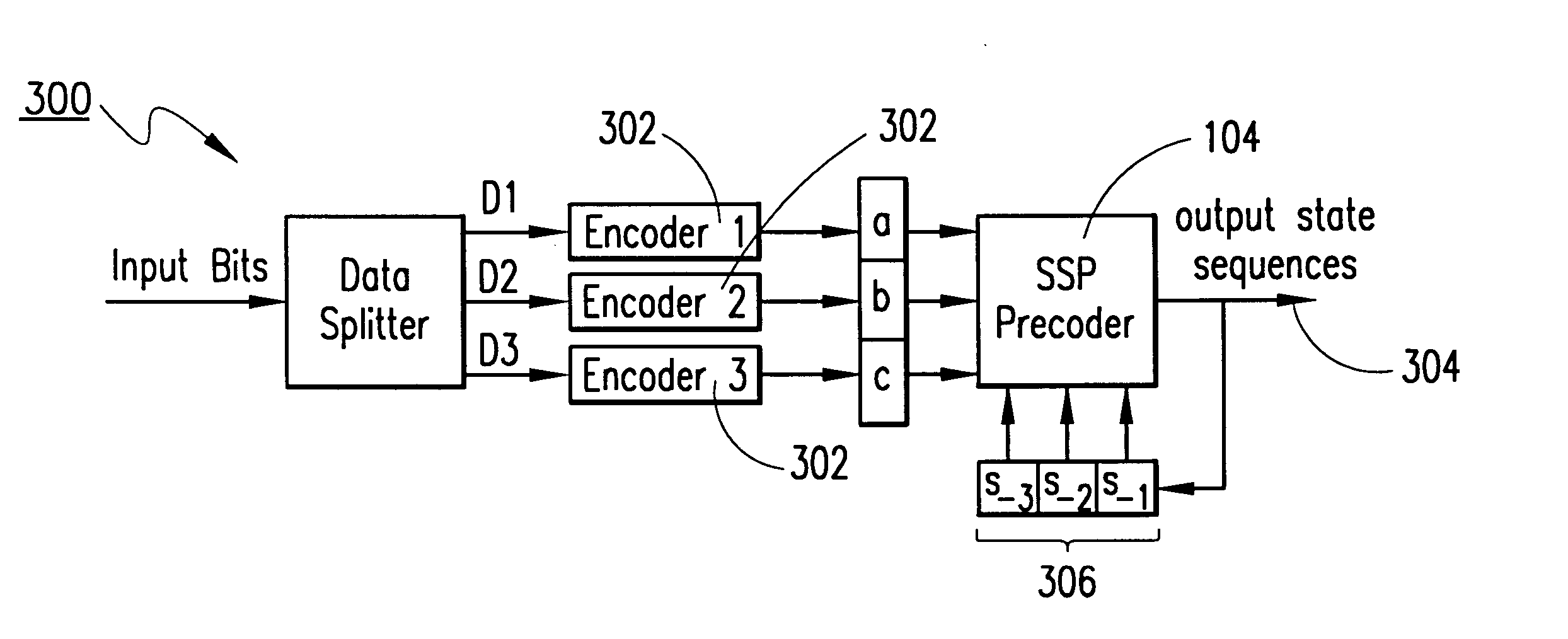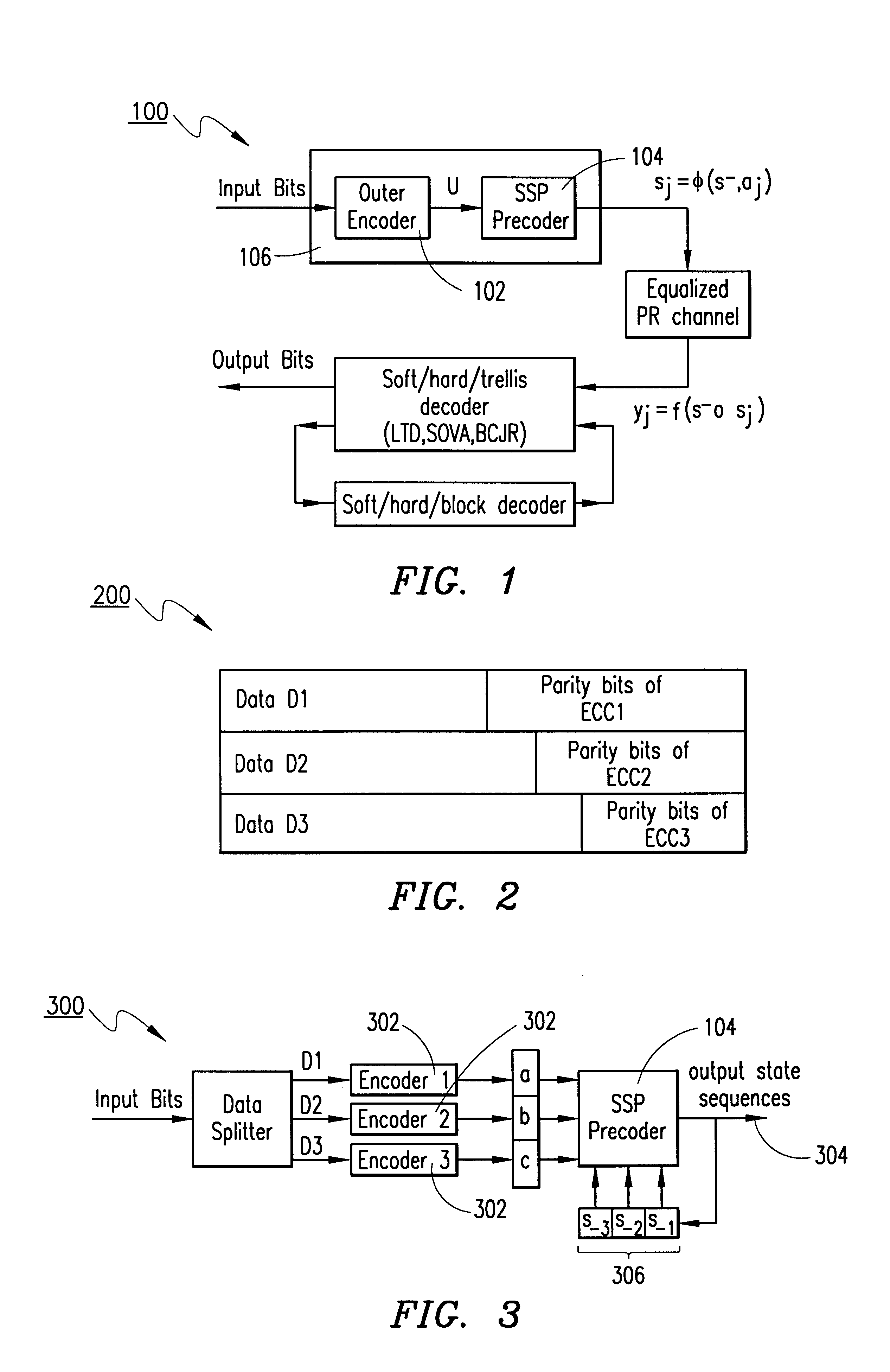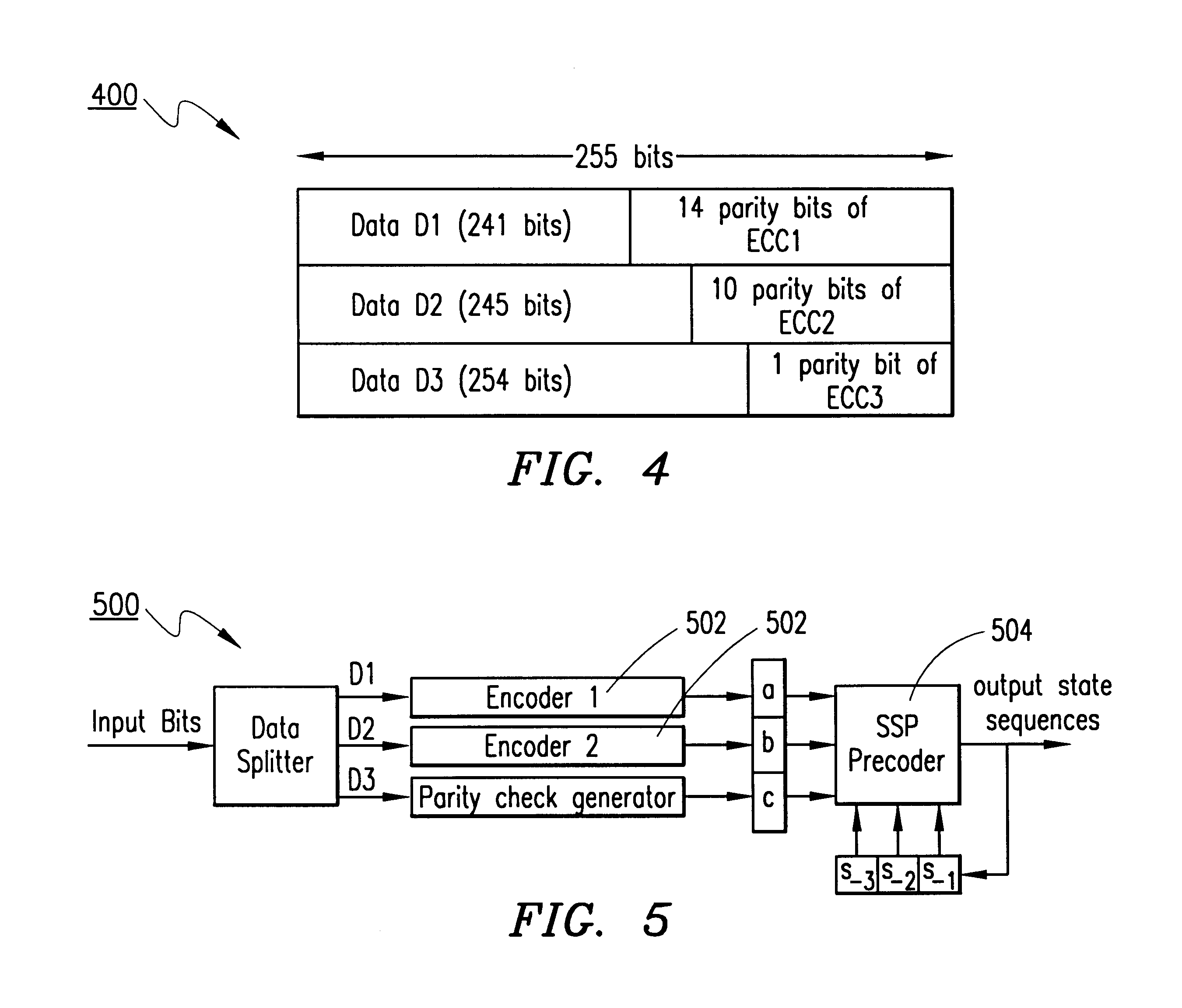Precoders for partial response channels
a technology of partial response and encoder, which is applied in the direction of error correction/detection using single space coding, transmission, transmitter/receiver shaping network, etc., can solve the problems of increasing the complexity of the encoder/decoder circuit is relatively large, and the decoding trellis is relatively complex, so as to reduce the complexity and time delay of the decoder scheme, the effect of increasing the minimum eucli
- Summary
- Abstract
- Description
- Claims
- Application Information
AI Technical Summary
Benefits of technology
Problems solved by technology
Method used
Image
Examples
Embodiment Construction
Referring now to the drawings, and in particular to FIG. 1, there is shown the structure of a read / write channel 100 with an L-level concatenated encoder 102 followed by an SSP precoder 104, and the functions of its main blocks. Encoding part of the channel 100 consists of a set of algebraic encoders 102 and a precoder 104. The combination of the encoder 102 and precoder 104 provide an encoder / precoder complex 106. Algebraic encoders generate an outer code matrix U of size L.times.n, L.ltoreq.l, such that its i-th row is a code word of the code C.sub.i with alphabet size q.sub.i =2.sup.l(i), and minimum Hamming distance, D.sub.i, i=0, 1, . . . , L-1. In the general case, the parameters l(i) are arbitrary positive integers, such that l(0)+l(1)+ . . . +l(L-1)=l, but in our examples below l=L=3, i.e., l(0)=l(1)=l(2)=1. Coded modulation schemes are usually set up so that D.sub.0 >D.sub.1 > . . . >D.sub.L-1. The general structure of an outer code matrix 200 for L=3, is shown in FIG. 2.
An...
PUM
| Property | Measurement | Unit |
|---|---|---|
| bit-length | aaaaa | aaaaa |
| Euclidean distance | aaaaa | aaaaa |
| bit-length | aaaaa | aaaaa |
Abstract
Description
Claims
Application Information
 Login to View More
Login to View More - R&D
- Intellectual Property
- Life Sciences
- Materials
- Tech Scout
- Unparalleled Data Quality
- Higher Quality Content
- 60% Fewer Hallucinations
Browse by: Latest US Patents, China's latest patents, Technical Efficacy Thesaurus, Application Domain, Technology Topic, Popular Technical Reports.
© 2025 PatSnap. All rights reserved.Legal|Privacy policy|Modern Slavery Act Transparency Statement|Sitemap|About US| Contact US: help@patsnap.com



